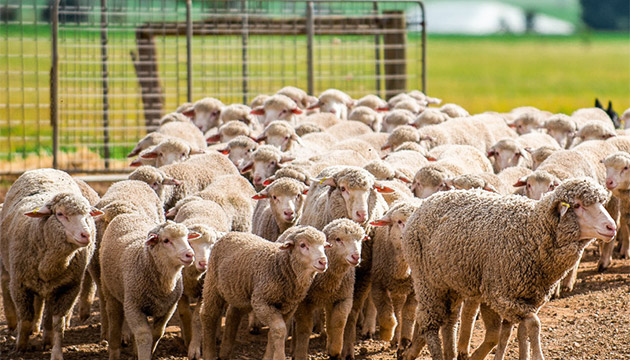Drought, wild dogs, changing fashions and volatility in the world’s markets continue to challenge Australia’s woolgrowers. But, like the sheep they run, these producers are a hardy, adaptable mob.
Story By Amanda Burdon
With the size of the nation’s sheep flock and returns for many wool types at historic lows, wild dogs prowling the countryside, complex market forces at play and drought thrown in for good measure, one could be forgiven for thinking that Australia’s wool industry is in the doldrums. Indeed, many producers (especially those at the fine and superfine end) are questioning wool’s viability and switching to other agricultural enterprises.
Concern about China’s dominance in sales and processing – it now buys up to 80 percent of the Australian clip – is widespread. Since the global financial crisis, the European masters of wool processing and manufacturing have found themselves unable to compete with the Asian powerhouse and its cheaper labour force. Many have either closed or downsized their mills or outsourced processing to China. Exquisite Australian fleeces that were coveted by prestigious fashion houses, and commanded a suitably prestigious price tag, are now commonly blended with lesser wools or passed in at auction.
Global fashion trends and processing advances have further exacerbated the oversupply of Australia’s finer wools (19.5 microns or less), which now comprise about 40% of the clip. Casual work wear has largely supplanted suits, and improvements to processing mean that cheaper, broader and shorter wools can be used to produce comfortable woollen fabric.
Australian Wool Innovation (AWI) is working to court new buyers and processors in countries such as India, Vietnam and Malaysia, and to win back former European and Russian partners. Recent campaigns have seen everyone from champion surfer Mick Fanning and the Prince of Wales to actors Cate Blanchett and Hugh Jackman spruiking the wonders of wool. “It would be great to find other markets, but at the moment they don’t exist,” says Josh Lamb, trading manager for Techwool Trading. “No commodity trader wants 75–80% of their sales for one product coming out of one country, but had China not been in the market during the global financial crisis it would have been a lot worse.”
Wool broker Marty Moses believes that considerable genetic gains to fine up Australia’s wools, coupled with a series of dry seasons, have contributed to the oversupply. “It’s a supply and demand issue that we don’t see that often,” Marty says. “Many people are switching to a dual-purpose Merino or a high-performing Merino bloodline that’s cutting a heavier fleece. Where growers previously selected for microns, they are now selecting their genetics for more emphasis on fleece weight.”
But the wool industry still has many big advocates. “The best wools we buy generally come from specially bred wool-producing animals; meat is a secondary thing,” says Andrew Blanch, managing director of New England Wool, one of the largest buyers of Australia’s superfine wools. “Wool needs to be differentiated by its quality, and its sustainable attributes clearly highlighted. If we view and market superfine wool as a commodity we are doomed.”
More positive is the new collaboration and innovation forged during these difficult times. Producers are exploring a range of ways that they can use genetics and other technology to make their businesses more sustainable. They are also seeking to better understand and monitor their sheep to guide breeding and grazing decisions.
South Australian sheep breeder Andrew Michael sees nothing but blue skies ahead. “We have the ability to modernise the Merino industry using the reproductive and genetic technology now available,” he says. “The Australian Merino flock has such a great genetic pool and is virtually untouched. There are so many characteristics that haven’t yet been measured and the potential is enormous.”
This Story is from Issue #97
Outback Magazine: Oct/Nov 2014










